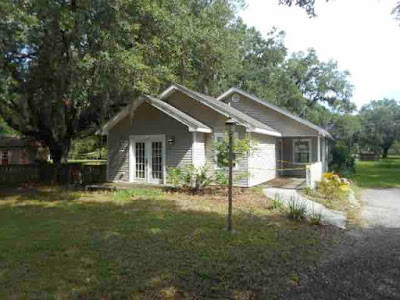Aside from getting a
check at closing, driving out to look at a property is the most exciting part of
rehabbing a house.
In industry speak, this is called doing a "walk-through."
The purpose of the walk-through is to see whether a property shows potential.
You don't have to be a master detective and identify every single problem.
Your home inspector and contractor help you do that.
However, knowing what to look for is a valuable skill set. Do this right and you will uncover properties with the biggest potential profits.
But what if you don't have experience...how do you know what to look for?
Here is a basic checklist that our team uses when we look at the interior of a home.
(I'll share the exterior checklist in another email.)
1. Floor plan. The house should have a "normal" floor plan. Don't buy a house if it has a bizarre custom layout.
2. Kitchen. Look under the sink. See if the cabinet floors are discolored. Press on them with your hands.
A soft or discolored cabinet floor means there is a leak in the plumbing.
Cabinets. Sometimes you can repaint cabinets and save money. Old laminate cabinets will have a pinkish color.
Those look bad and need to be replaced.
In most cases you will be replacing the kitchen floors, but you want to make sure they are level. Put a marble on the floor and see what happens.
3. Bathrooms. Because there is so much water flying around, moisture is a common problem.
Check the floors for soft spots around the toilet. Stand in the tub. You want to feel a solid (not soft)
floor.
Look under the bathroom sink and do the same check that you did in the kitchen.
4. Bedrooms. Record the condition of the floors. Hardwood (under the carpet) and any overhead lighting are bonuses.
5. Ceilings and Walls. Look for cracks. Some cracks suggest a foundation issue.
Otherwise, most cracks are likely due to age and can be easily repaired.
6. Electrical. - You don't have to be an electrician, but you can still check for a few things.
If electricity is on, test all the switches.
An old breaker box (the type with colored fuses) will need to be replaced.
7. HVAC. Again, you don't have to be an expert, but see if it looks old. If you're lucky it still appears
new and functional.
Hot water heaters are good for about 10 years. The yellow sticker tells you how old it is.
Use this checklist when you look at your next property.
Remember to bring a flashlight, a camera, tape measure and a notebook to jot down what you see.
TIP: Record your mileage when you drive out to look at properties. It is a tax deduction.
Are you ready to take the next step and start flipping houses?





